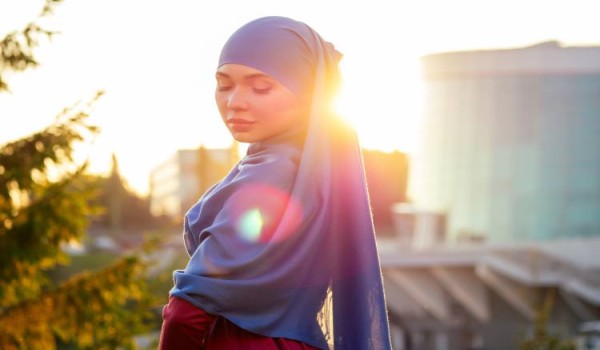
Understanding the Importance of Wearing Hijab in Islam
The main purpose of this blog is to explain the concept of hijab in the Islamic religion. It will also explain its kinds and the Quran's stance on it. Also, we will describe how various groups of people adapt to wearing hijabs, such as the young Sunni Muslim brides in Bangalore.
Table of Content
- What does the Hijab mean for Muslim females
- Insignificance of Hijab in Islam
- What does the Quran have to say about hijab?
- Different Types of Hijab
- Conclusion
What does the Hijab mean for Muslim females?
The word ‘hijab’ originated from the Arabic word ‘hajaba, '. It means ‘screen' or 'cover.' It is the act of putting on clothing, especially for the ladies, for the purpose of protecting the innocence that they carry around. While a hijab to Muslim women is strictly a piece of clothing that originally covers the head and chest, it also means much more. It symbolises modesty, respect, and obedience to the will of Allah. For a long time, wearing a hijab in many Islamic societies has been considered an act of obeying Allah. It is considered a necessity to preserve one’s privacy.
Insignificance of Hijab in Islam
It is imperative to understand the concept of hijab. It is not just limited to or about how a woman looks. Instead, hijab is a form of worship and obedience to Allah. Some Muslim women and girls wear hijabs as a symbol of their individuality or religious belief. It is also a message that their faith is their topmost priority in life.
Another factor that makes hijab significant in Islamic culture is the notion of a woman’s chastity. That is why, when a woman covers herself, she controls how she wants to be looked at and will be judged on her mind and heart, not her face and figure.
Further, the hijab gives some special feeling of belonging to the Muslim community. It connects the women who wear it to a tradition of decency, obedience, and faithfulness that has been accepted for centuries. Whether in the downtown of an Islamic city or among Sunni Muslim brides in Bangalore, we can see that the hijab is a sign of spirit and respect.
What does the Quran have to say about hijab?
The Quran includes guidance concerning the question of modesty. So, is hijab considered acceptable in the Quran or not? It should be highlighted that there are a number of verses in the Quran that talk about both male and female dressing and behaviour.
One of the most referenced verses is in Surah An-Nur (24:31), where Allah instructs women to "draw their veils over their bosoms and not to reveal their adornment except to their husbands, fathers, [and other close male relatives]." This verse emphasizes the concept of modesty and protection for women, advising them to cover their bodies in a way that shields them from unwanted attention.
Similarly, in Surah Al-Ahzab (33:59), Allah advises the Prophet to tell his wives, daughters, and the women of the believers to draw their outer garments around them when they go out. This act of covering is described as a means of protection, ensuring that women are recognized and not harassed.
The Quran says that hijab is all about modesty, respect, and protection. Wearing the hijab is not only a cultural practice. It is also a religious obligation according to Islamic teachings.
Also Read - Principles of a Happy Marriage According to Islamic Teachings
Different Types of Hijab
The various kinds of the hijab show the versatility of Muslim women. The most recognized variant of the hijab is a headscarf. A number of other types of hijabs are distinguished by the preference of the culture, as well as the concrete interpretation of the religious studies and personal discretion.
- Hijab: One of the most familiar styles that covers the head, neck, and ears but with the face exposed.
- Niqab: A cloth or garment that is worn on the face, thereby only revealing the eyes. More than the hijab, it is worn coupled with the headscarf, which offers even more coverage.
- Chador: It is a type of long and loose gown. Chador is worn from head to feet. It is mostly used in Iran. Chador envelops the body from head to toe. Also, the head is covered with a veil.
- Burqa: It is a full body cover with a mesh screen for the eyes. Burqa offers the highest level of protection. The burqa is conventionally used in some areas of Afghanistan and Pakistan.
- Shayla: It is a piece of long rectangular cloth that is folded around the head and fastened with pins or closed at the back and at the shoulders. It is common in Gulf countries.
- Khimar: It is a piece of clothing resembling a cloak. Khimar covers the head, neck, and the upper part of the body. But, it does not conceal the face. It provides more coverage than an ordinary hijab.
Conclusion
The importance of hijab in Islam cannot be overstated. It is a practice rooted in the principles of modesty and faith. It offers Muslim women the freedom to express their devotion to God. It also allows them to maintain their dignity in society. What is a hijab for Muslim women is more than just a headscarf. It is an integral part of their spiritual journey.
The hijab is a powerful symbol of identity, faith, and community. As Muslim women all around the world embrace the beauty and meaning behind wearing the hijab, they also honour centuries of tradition and religious teachings.
At Nikah Namah, we understand and respect the rich cultural and religious practices of Mulims. We are here to support you every step of the way when you are looking for your perfect Muslim life partner. Embrace your faith and your future with Nikah Namah. With us your journey toward a blessed union begins.

